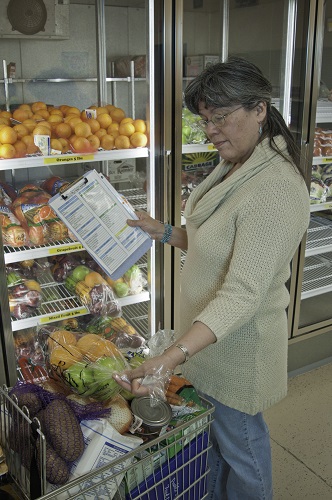
No American should have to go hungry. USDA’s 15 nutrition assistance programs make great strides in reaching those in need, but challenges and barriers persist to eradicating food insecurity in our nation. That’s where leadership and partnerships come into play.
Earlier this month, FNS had the opportunity to participate in an interactive discussion on the obstacles faced on effectively communicating to specific populations at the 2016 Feeding America Annual Conference in Chicago. The dialogue focused on reaching the most vulnerable Americans: those in Tribal communities, teens and our nation’s proud military veterans. The hurdles to reach all three are unique, and strategies require nuance, understanding and a bold commitment to better connect individuals with nutrition assistance information.
Almost one in four American Indians are food insecure, with a poverty rate nearly double that of national levels. Addressing this challenge goes well-beyond traditional barriers – many live in hard-to-reach rural communities and there are over 250 indigenous dialects in the U.S. It requires a deep cultural understanding and respect. It’s critical that nutrition-assistance partners learn about the Tribal Nations with which they interact and educate themselves on cultural traditions and customs. Most importantly, partners should establish rapport and visit frequently: Most Tribes place great emphasis and value on face-to-face interactions, which go a long way in establishing trust.
Teens represent another hard-to-reach demographic. With the ever-changing ways teens communicate, reaching them becomes a real challenge. Numerous partners have enjoyed success through social media and pop culture channels and by drawing kids in with relevant activities available at meal sites, like those in summer meals programs. Another challenge relates to stigma. Unsurprisingly, young people don’t want to be perceived as poor or in need. Involving them as volunteers and interns in programs helps engage teens and offers them an important source of pride.
Finally, the service of our nation’s veterans demands to be honored, but sadly, all too many return home and struggle in their transition. Collectively, we need to better educate these proud Americans of the availability of nutrition programs they may be eligible for. Many may not be aware of the assistance they, their families and fellow veterans have to accessing nutritious meals. To address this information gap, USDA works closely with partners, such as Feeding America, to provide information about available resources and breakdown barriers related to pride and embarrassment. A network of support that includes the Veterans Administration, Department of Defense, homeless organizations, and a variety of partners, is needed to make sure their needs are met.
There are many variables and challenges to reaching three diverse groups of Americans. The conference gave USDA and our vital partners a chance to reflect on these barriers, develop solutions and foster the leadership needed to end hunger in America.
For more on Food Distribution Program on Indian Reservations, visit http://www.fns.usda.gov/fdpir/food-distribution-program-indian-reservations-fdpir
To see how USDA Summer Meal Programs reach our nation’s youth, check out: http://www.fns.usda.gov/sfsp/raise-awareness
To help inform our military and veteran families about available nutrition assistance, see http://www.fns.usda.gov/get-involved/military-and-veteran-families
